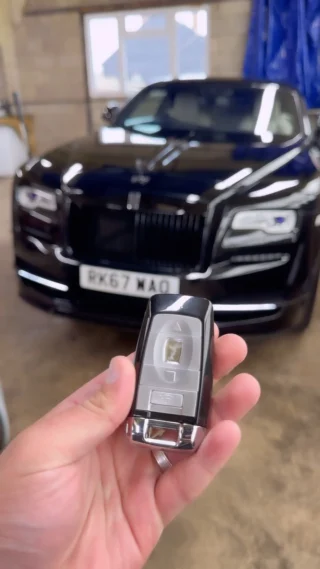Blog entry by Fawn Tomlin
Smart Key Repair: Understanding the Technology and Solutions
In today's fast-paced digital world, smart keys have become an essential feature in a lot of modern cars. Unlike conventional keys, smart keys supply chauffeurs with improved security and benefit, permitting keyless entry and starting of the vehicle. Nevertheless, like any technological advancement, smart keys are not immune to problems. Understanding how smart keys work, typical problems that occur, and options available for repair can empower vehicle owners to make informed decisions regarding their smart key repair (click the next web page) key systems.
What is a Smart Key?
Smart keys, also referred to as key fobs or proximity keys, are electronic gadgets that allow the user to unlock and start their vehicle without physically inserting a key into the lock or ignition. Rather, the vehicle identifies the distance of the key and carries out the required functions instantly.

Key Components of a Smart Key:
- Transmitter: Sends radio signals to the vehicle.
- Receiver: Located within the vehicle; discovers the signal from the transmitter.
- Battery: Powers the smart key and its functions.
- Microchip: Encodes the frequency and other information needed for functionality.
Advantages of Smart Keys:
- Convenience: Unlocks doors, begins the ignition, and can even stop the engine without key insertion.
- Security: Incorporates advanced encryption innovation to prevent unapproved gain access to.
- Adjustable Functions: Many smart keys allow users to tailor settings for different motorists.
Typical Problems with Smart Keys
While smart keys enhance security and user experience, they can also encounter problems that necessitate repair. Here are a few of the most typical problems associated with smart keys:
| Problem | Description |
|---|---|
| Dead Battery | The most common problem; a dead battery renders the key inoperable. |
| Signal Interference | Disturbance from other electronic devices can disrupt the signal. |
| Physical Damage | Dropping or exposure to water can damage key elements. |
| Programming Errors | Misconfiguration can trigger the key to become unresponsive. |
| Used Contacts | Internal parts can wear out with heavy usage. |
Dead Battery: Signs and Solutions
Among these concerns, a dead battery is the simplest to fix. Signs that the battery may be dead consist of:
- Difficulty unlocking doors from another location.
- Failure to begin the vehicle.
- Sluggish action time from the key fob.
How to Replace the Battery of a Smart Key:
- Identify Battery Type: Look for the battery type in the owner's manual or on the battery itself.
- Open the Key Fob: Use a small screwdriver to separate the 2 halves of the fob carefully.
- Change the Battery: Remove the old battery and replace it with a new one, ensuring right polarity.
- Reassemble the Key: Snap the two halves back together.
Signal Interference: Identifying the Cause
Signal interference can be a substantial concern, specifically in city environments where lots of electronic gadgets are present. To figure out if your smart key is impacted:
- Move far from prospective sources of interference (e.g., radio towers, electronic stores).
- Test the key in an open space.
If the problem continues, consider seeking advice from an expert.
Physical Damage: Prevention Tips
Preventing physical damage to your smart key is vital. Here are some ideas to preserve your key's stability:
- Use a Keychain: Attach the smart key to a keychain to prevent dropping.
- Prevent Water: Keep your type in a dry location and avoid direct exposure to rain or liquid.
- Shop Safely: Use a protective case when not in usage.
Programming Errors: Fixing the Issue
In some cases, the key might need to be reprogrammed. This can happen after replacing the battery or if the vehicle's system has been reset. To reprogram a smart key:
- Refer to the Manual: Locate programming directions specific to your vehicle design.
- Use the Ignition: Usually, the vehicle should be on; follow the series described in the manual.
- Simultaneously press buttons: You might require to press particular buttons on the key.
If the problem continues, contacting a professional locksmith or the dealer is suggested.
Repairing vs. Replacing a Smart Key
When confronted with a malfunctioning smart key, vehicle owners frequently face the choice to repair or change. Here's a breakdown:
When to Repair:
- Battery Replacement: If the issue is simply a dead battery.
- Minor Physical Damage: If the key can be easily fixed or straightened.
- Reprogramming: If errors can be fixed by following the user manual.
When to Replace:
- Severe Damage: If the fob is broken beyond basic repair.
- Cost-Effective: Sometimes, a brand-new key may cost less than comprehensive repairs, specifically if more than one part is harmed.
- Obsolete Technology: If the vehicle is older and the key innovation is obsoleted, replacing it might offer much better functionality.
Often Asked Questions (FAQs)
1. The length of time does a smart key battery last?
The battery generally lasts in between 1 to 3 years, depending upon usage and environmental elements.
2. Can I configure my smart key myself?
In many cases, you can configure your smart key by following the owner's manual directions. Nevertheless, advanced models might require expert help.
3. What should I do if my smart key is lost?
If your smart key is lost, immediately inform your dealership or locksmith. They can assist you with a replacement or reprogramming services.
4. Are smart keys universal?
No, smart keys are normally set particularly for private vehicle models and manufacturers, which implies a key from one brand often will not work with another.

5. How can I avoid my smart key from malfunctioning?
To prevent breakdown, prevent exposing the key to extreme temperatures, moisture, and physical damage, and replace the battery frequently.
Smart key systems simplify vehicle gain access to and enhance security however included their own set of challenges. Understanding common issues and repair options can help vehicle owners keep functionality and extend the life of their smart keys. With appropriate care, users can delight in the full benefits of this advanced technology for years to come.
